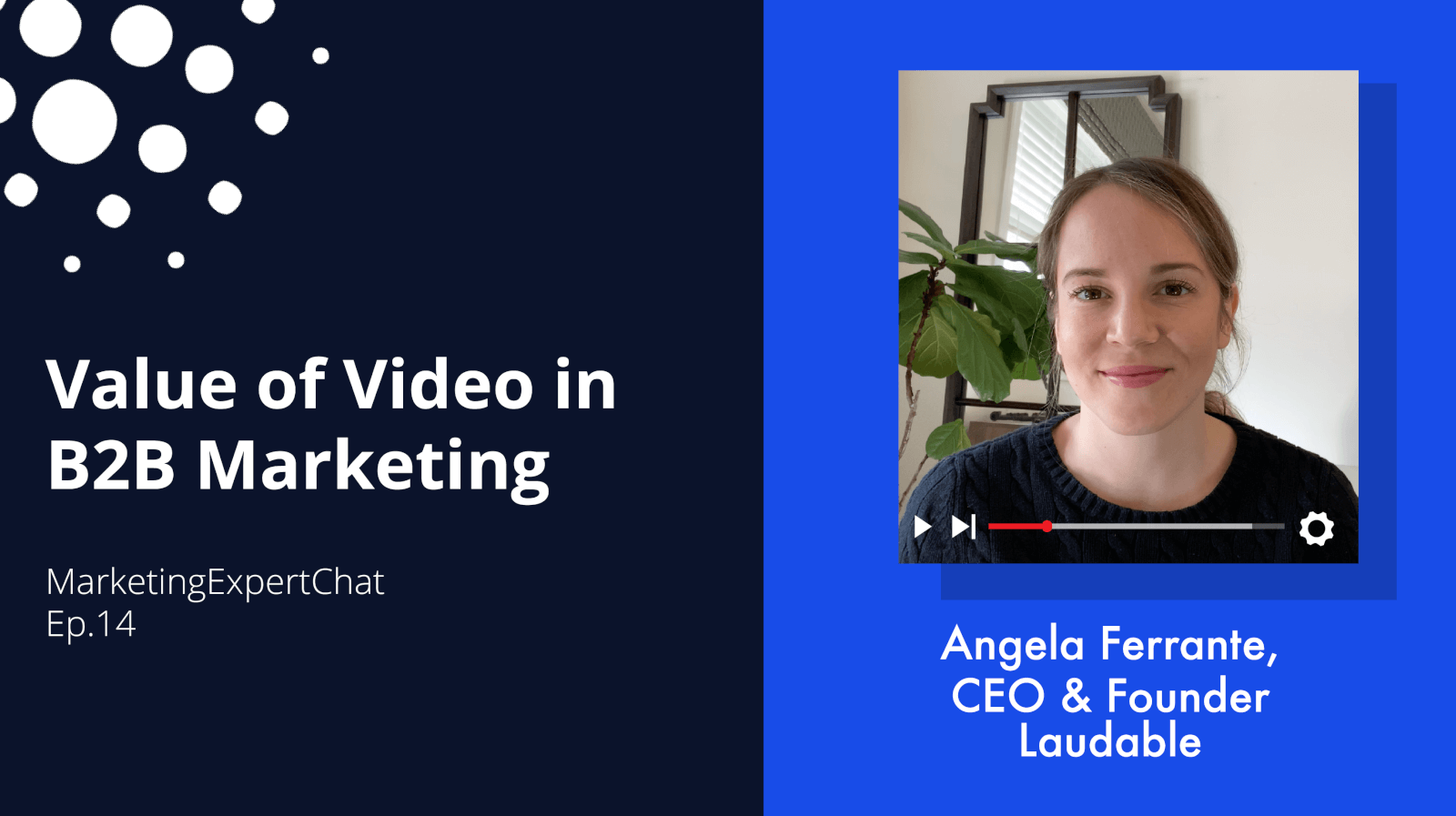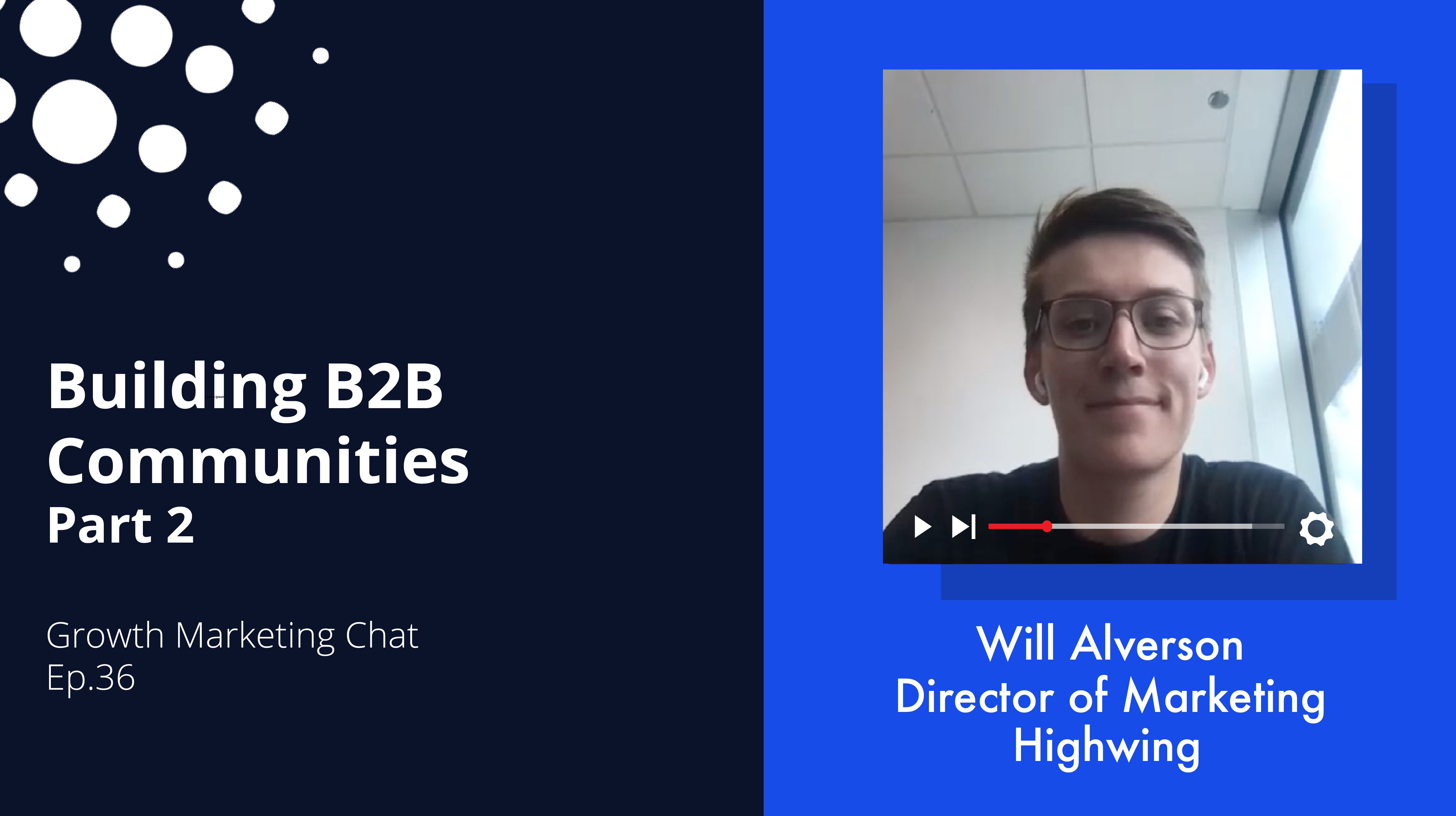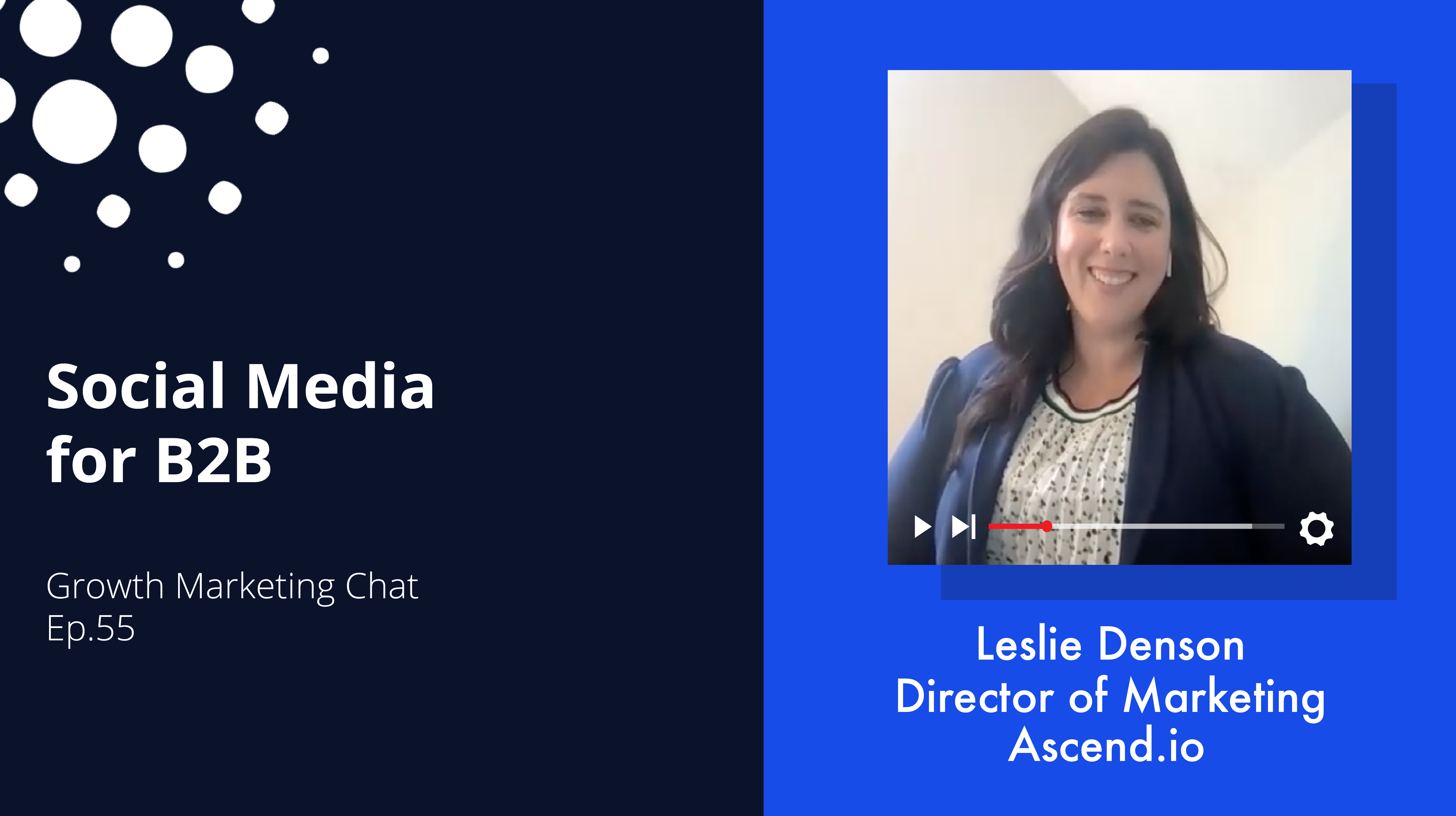Boring marketing is the bane of every marketer’s existence. None of us want to be guilty of producing dull, uninspiring content that gets lost in the mix of all other products and brands.
However, stepping outside our company’s comfort zone and getting creative with our marketing efforts, content and branding can be a bit nerve-wracking, as it comes with the risk of simply not working.
Getting Creative in B2B Marketing
We brought in Cory Ploessl, Marketing Manager at Structural, to help our audience understand that it’s okay to fail. In fact, he encourages all B2B marketers to take risks when it comes to being creative with their brand’s marketing, because it can pay off in the long run.
In just 5 minutes, he’ll walk you through:
-
Discovering the balance between art and fear
-
The importance of leadership’s role in supporting B2B marketing creativity
-
The 70-20-10 rule
Bottom line? Don’t be afraid to fail once or twice before finding success if it means creating powerful marketing content.
If you need inspiration to help your B2B business stand out, tune in now to hear Cory’s advice!
Video Transcript:
CAROLINE: Hi! Today, I’m here with Cory Ploessl. Cory is a super creative marketer, and he doesn’t believe in boring marketing, which honestly nobody should believe in boring marketing, and he is the Marketing Manager at Structural. Cory, thank you so much for being with me today.
CORY: Thanks for having me Caroline, appreciate it.
CAROLINE: So today we’re going to talk about how to be creative in marketing. And I think especially B2B marketers can be guilty of always going the safe way, right? And so, it can be really challenging to be creative in in the B2B space, but you are very creative marketer. And so, what’s your approach for being creative and making sure that you put content out there that is different and stands out and creates some enthusiasm?
CORY: Yeah, I mean, first I just want to acknowledge that marketing is inherently terrifying. Like you, you are putting yourself out there, you’re putting your brand out there. It’s like the ultimate sense of being vulnerable as from a business perspective. And if you’re in a small company, like I work for a small startup tech company, you know it’s basically me and one other person and if something goes wrong, there’s only a couple sets of shoulders that can really fall on.
I think about creativity, and I think about this idea of just doing it, but you can’t, you can’t think about any of that stuff without acknowledging the fear that’s inherent in creativity. I actually come from an arts background. I got my master’s degree in sculpture in Boston, and we did a lot of reading about art and fear. There’s actually a book called “Art and Fear” and they talk a lot about this idea of embracing uncertainty, vulnerability. I think vulnerability is having this big moment right now, but it’s always been there for creatives. You know, if you put yourself out there, you’re opening yourself up to failure and to ridicule but to push through that is the only way that you can really succeed, right?
And I think that the more creative you are and the more you push through that fear the better results you’re going to have, but it doesn’t just start and end with the individual creator. You know, I think it’s, it’s a leadership thing. Leaders need to embrace people to make mistakes, to fail, and only that way can we really embrace creativity. Historically, you know people who are encouraged to take risks are usually people that look a lot like me, right? And that’s something I think where leadership really needs to step up and allow everybody on the team to be creative. And it doesn’t have to start and end with marketing either.
So specifically in my role currently I’ve had an amazing opportunity. My boss, Scott Burns, he really embraces this idea of take risks. He talks about how, as a small company our strategic advantage really over larger kind of more established companies is that we have nothing to lose and what an amazing empowering way to start your day every single day as, “Hey, we have nothing to lose.” You know, we kind of started from nothing and we’re gonna take risks. We’re gonna make bets, and we’re going to find out which bets are working and we’re going to double down on those.
So, we’ve had the opportunity to do a lot of cool things like a podcast, lots of digital events. I recently created a couple of videos for a competition that we’re in that were just kind of goofy. And even for that one, like Scott was out of town. I didn’t really know if he would give it the thumbs up on it, but I knew that seed had been planted in my mind that I could take risks. I was backed up by leadership and basically my creativity was trusted.
CAROLINE: That’s great. That’s a great point. And I think something else that you brought up that’s really important is that this, so there’s the risk factor, right? And just trying it, the other factor is that you know creativity doesn’t happen in one day. Like the first thing you put out is not necessarily what’s going to be like the big win, right?
CORY: Right.
CAROLINE: The chances are that you’re going to create the best campaign ever from your first try are really, really low. So, like do it and then have a little success and learn from this and do it again. And you know, like there’s a book about creativity that is really phenomenal. It’s called the Creative Curve, and it explains how all the artists, like all the biggest, biggest songs are for the past few centuries. Right. They didn’t happen in one day. There was a Belgian one that didn’t make it anywhere. Right? So, like iteration and testing and doubling done on what works is like really, really where it’s at, right. There’s no like creative genius that just happens in one day.
CORY: Absolutely not. It’s work. You know, work creates work. Actually, on your point I just read that Quincy Jones had a quote that Michael Jackson went through about 800 songs to come up with the what is it, eight or 10 that are on the Thriller album. So, there is so much that the world never sees, and you need to put in that work in order to be successful. And I recently came across this idea of the 70-20-10 rule where 70% of everything you produce is going to be pretty mediocre, 20% that’s just going to suck, and 10% is going to be the best you can possibly do. You know, everybody’s best is at a different level but the 70-20-10 rule kind of is true for everybody. So, if you’re only making three campaigns, it’s not a great chance that, you know, you’re going to hit on one of those. But if you do a hundred campaigns, probably gonna hit up about 10 of them. So, it’s all out there.
CAROLINE: Awesome. Well, I love this, so okay. To sum up, you want to be creative. Just do it. Go for it.
CORY: You’re probably going to fail. It’s fine.
CAROLINE: Yeah. Yeah, exactly. Embrace failure. Right. And just try again.
CORY: Slowly.
CAROLINE: Okay. Well thank you so much Cory. It was really a pleasure having you here. Yeah. Thanks again for participating.
CORY: Pleasure’s all mine. Take care.





